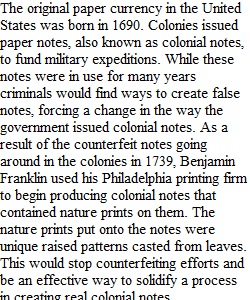


Q Term Paper The Social Construction of Stuff *This is where you submit your final project. Only one person needs to submit the paper for the group. File MUST be either Word doc, Google doc, or PDF. No other file types will be accepted. You will be randomly assigned to groups of four no later than week 3. Groups are assigned randomly, but if there is a classmate you would prefer to work with, let me know ASAP and I will be happy to make those arrangements. You can send your request to my Canvas Inbox no later than, Wednesday, September 9, 11:59 pm. I will NOT change groups once they have been made, so please get me those requests before that deadline. In your group you will brainstorm and decide what social pheonomenon your paper will examine. This can be anything we "do" in society today. Then you will decide which era everyone will contribute to the history section, which country you will contribute to the cross-cultural section, and which macro perspective you will contribute to the macro perspectives section. When you have decided all of this, one person in the group will send a DM that CCs me and your groupmates with a brief proposal of your topic and which parts each of you will contribute to each perspective. The proposal is due by Sunday, September 20, 11:59 pm, as an inbox message (1 proposal per group, and I will give more details about this once groups are assigned, in an announcement). ________________________________________ • Demonstrate the ability to use a societal framework in order to analyze any given situation rather than an individual analysis. ________________________________________ WRITTEN ASSIGNMENT (50 points): In groups of four, you will complete an 8 – 10 page research paper examining how something that we do not usually think about in our daily lives has been socially constructed. This can be anything and creativity is encouraged. You will consider your “stuff” from three perspectives, and each group member will contribute one part per perspective (see below), to explain how that thing has come to be the way we know it today. *Every paper must have the following sections: • Historical Section: Each group member will pick a specific era in your “stuff’s” United States history (go back as far as possible). Research and write about your era, and then put the together in chronological order in this section of the paper. • Cross-cultural Section: Each group member will pick a different country. Research and write about how your “stuff” is used in your country in present day, and then put each country together in this section of the paper. • Macro Perspectives Section: Each group member will pick another macro perspective that you can relate to your “stuff” (i.e. gender, politics, media…). You will research and write about how that macro perspective has shaped our understanding/experiences of your “stuff” in present day, United States culture. Each section should have a subheading heading and be included in your final paper. In the paper you will take a sociological and objective approach. For example, if you are researching marijuana I DO NOT want a paper about why smoking marijuana is bad for people and should not be legalized (or, on the other hand, why you think it should be legal). Your paper should be in standard essay form, 12 pt font, double spaced, 1” margins. Please proofread. You must have a works cited page listing at least 8 outside sources (2 per group member). You will upload the final paper here (one person in the group will submit the paper), and it must be turned in as a word doc, pdf, or goggle doc. No other file will be accepted, and if another format is submitted that will result in a grade of zero for the group. The final papers are due no later than Sunday, December 5, 11:59 pm. Turn them in on the assignment page (Module 14.1). VISUAL PRESENTATION (25 points): You will also be responsible for turning in a visual presentation to represent your “stuff” and share what you learned with the class (approach it like, what would you use to accompany a presentation in a face-to-face class, i.e. powerpoint presentation, prezi, etc.,). These will be uploaded to a discussion board thread (Module 14.2), are also due by December 5 at 11:59pm. PEER REVIEW (10 points): After the due date, each person will be randomly assigned a group's project to peer reveiw, and you will be required to look at and give feedback on each other’s presentations. There will be a rubric provided, and you will fill out and submit the form for 10 points. This will be due no later than October 25, at 11:59pm. Zoom Session (Optional): Once groups are assigned and you have had some time to brainstorm, I will hold an optional zoom session where we will go over the format and answer any questions you have. Details about that will be provided in an announcement when we get closer to the time. The Zoom will also be recorded so you can access it for the duration of the semester. Rubric Some Rubric Some Rubric Criteria Ratings Pts This criterion is linked to a Learning OutcomeHistory Section Each group member has a researched and detailed account of the area they are contributing to the historical section. 16.8 pts This criterion is linked to a Learning OutcomeCross-Cultural Section Each group member has contributed a researched and detailed account of the country they chose to contribute to the paper. 16.6 pts This criterion is linked to a Learning OutcomeMacro Perspectives Section Each group member has contributed a researched and detailed account of the marcro perspective they chose to contribute to the paper. 16.6 pts Total Points: 50 PreviousNext
View Related Questions